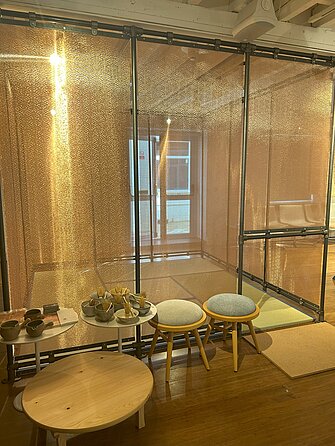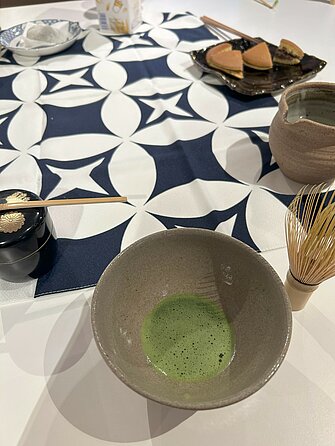Culture & Lifestyle
|14/08/2024

Continuing our series around our popular exhibition, Technology Meets Tradition, at TOTO’s showroom in London, we recently hosted a series of exclusive traditional Japanese Tea Ceremonies. These were demonstrated by Keiko Uchida who gave us incredible insight to the way of tea. Our guests were enchanted by the experience and a greater understanding of Japanese Culture all in the surroundings of our specially designed and constructed Tea House and Zen Garden.
The Japanese tea ceremony, known as chanoyu or sado meaning "the way of tea," is a traditional practice deeply rooted in Japanese culture. It is a ceremonial preparation and consumption of matcha, a powdered green tea that embodies principles of harmony, respect, purity, and tranquility.

The origins of the tea ceremony started in 9th Century when tea was introduced to Japan from China by Buddhist monks who used it to stay awake during meditation. By 12th Century the monk Eisai is credited with popularising tea drinking in Japan. He brought back tea seeds from China and promoted tea's health benefits. In 15th Century the shogun Ashikaga Yoshimasa played a key role in formalising the tea ceremony and in 16th Century Sen no Rikyū, a tea master, further refined the tea ceremony, emphasising simplicity and spiritual depth. He established many of the rituals and aesthetic principles which are still followed today and which were carried out at TOTO London.
The elements and rituals of the tea ceremony follow a strict pattern:
Tea Room (or Chashitsu) is typically a small, simple, and serene space designed to create a sense of tranquility. It often includes a tatami-matted floor, a sunken hearth (ro) for boiling water, and a tokonoma (alcove) where a scroll or flower arrangement is displayed.

The Utensils
The Rituals
The Japanese tea ceremony is a profound cultural practice that goes beyond the mere act of drinking tea. It encapsulates deep philosophical principles and an appreciation for beauty, simplicity, and mindfulness. Through its rituals, the tea ceremony provides a serene and reflective experience, offering a window into the essence of Japanese culture.